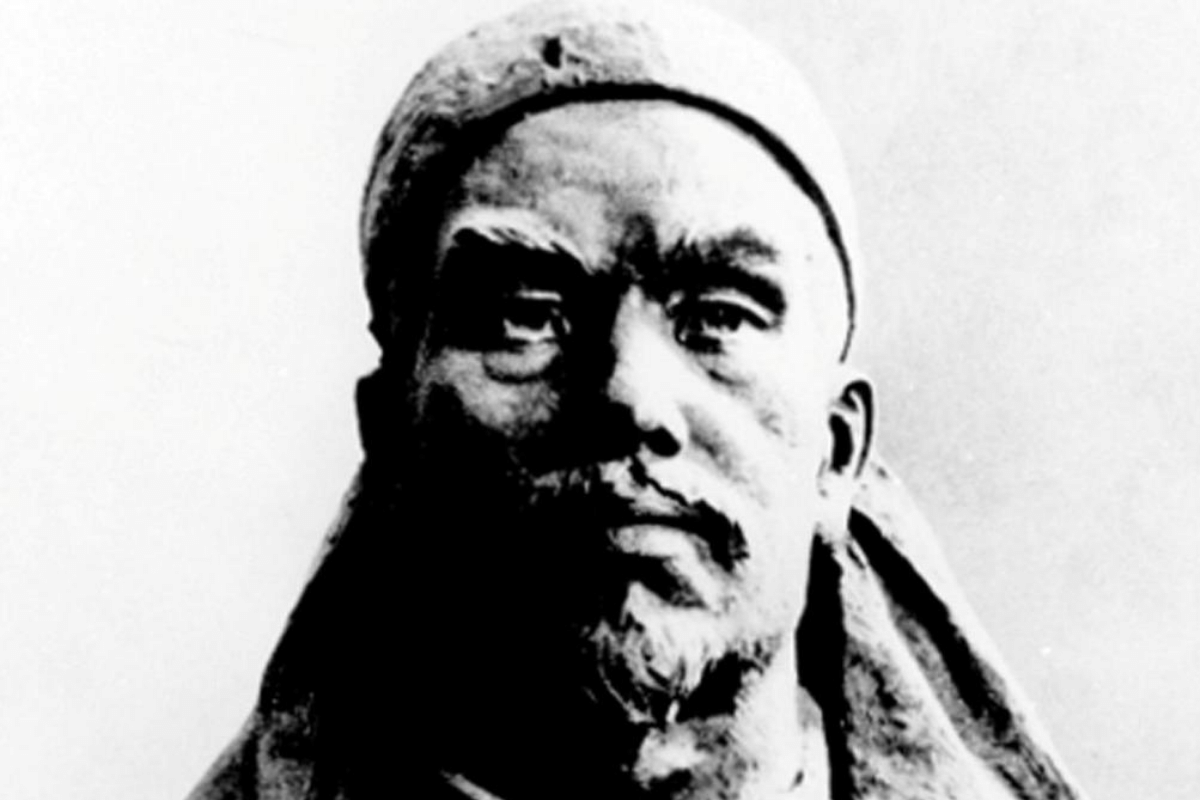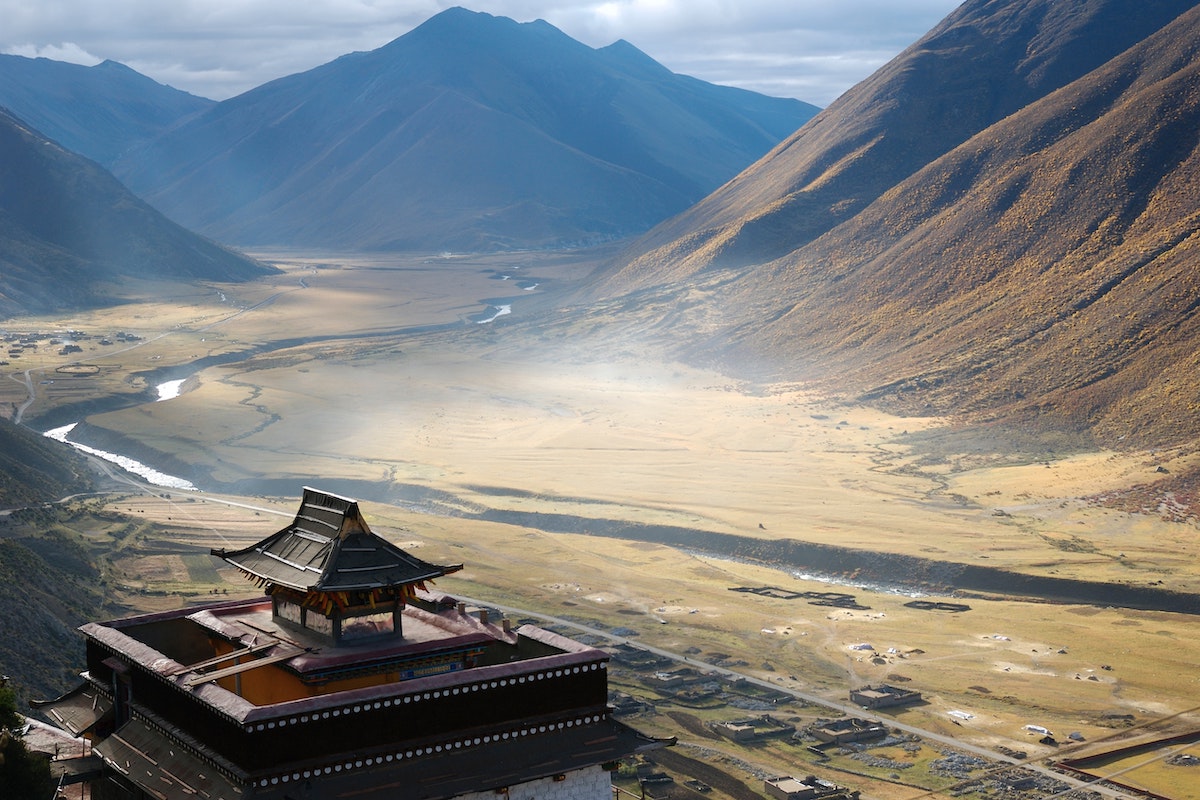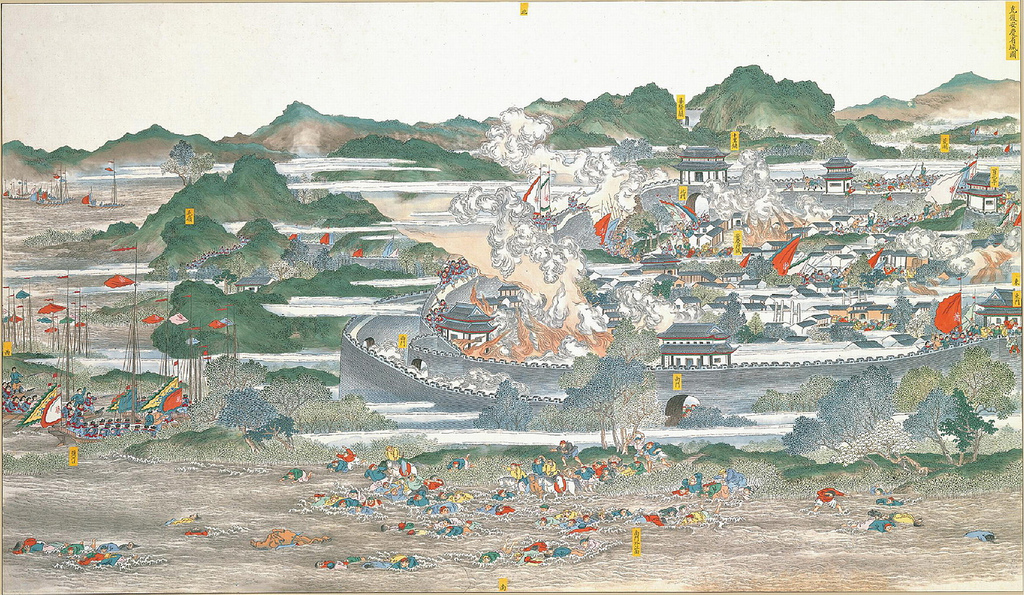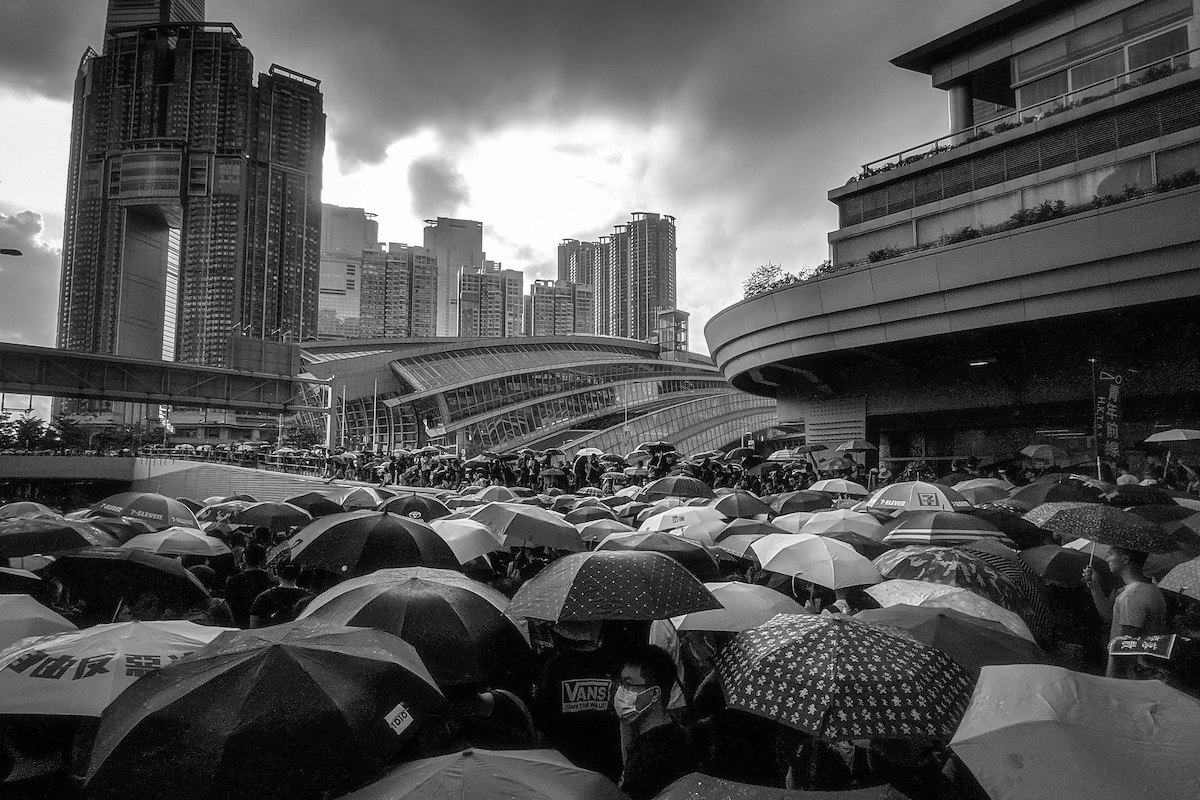History
White Lotus, Red Dragon—China’s History of Millenarian Dissent
When one woman refused and snapped at them to “go away,” they attacked her with a chair and mop handle.

On a warm Wednesday evening in May 2014, six people walked into a McDonald’s in Zhaoyuan, on China’s north-east coast. Four of the group were members of the same family, including a 12-year-old boy. Within minutes of entering the restaurant, they had cornered a young mother and were beating her to death. The motive for this murder has never been satisfactorily explained, but state media would soon portray it as the latest act in a drama that has been unfolding for almost 2,000 years.
The group had been harassing diners, asking for their phone numbers. When one woman refused and snapped at them to “go away,” they attacked her with a chair and mop handle. Bystanders were told that if anyone tried to interfere, they would be killed. Police arrived quickly but the attackers continued to batter the woman’s body, breaking their weapons in the frenzy, until they were arrested. Part of the incident was captured by an onlooker’s mobile phone and uploaded to the video sharing site Sohu, from where it went viral. The video is a disorienting watch. Three minutes of shaky footage begin with the sound of raised voices from the far side of the restaurant. A man can be seen bringing down a weapon with some force. Several women stand behind him in apparent support; his victim is hidden behind a partition. Little else can be discerned from the footage, and the phone’s owner quickly leaves the restaurant in fright. The victim’s screams follow him out into the car park.
Party-controlled media was quick to connect the atrocity to the Church of Almighty God, a religious movement more famously known as Eastern Lightning after a line in the Gospel of Matthew: “For as the lightning comes from the east and flashes to the west, so also will the coming of the Son of Man be.”1 Eastern Lightning literature was found in the homes of the attackers, or so the police claimed. Within days of the incident, China Central Television broadcast the police interrogation of Zhang Lidong, the man captured in the video footage. He said that the murder had been necessary, because the woman was a demon.
Even before the McDonald’s murder, state propaganda had spent years painting the group as a dangerous cult.2 Salacious rumours abound. The American pastor Dennis Balcombe was once detained in China on suspicion of belonging to the Church, and after he was cleared and released, he told VICE that the young ladies of Eastern Lightning “use sex to try to convert people.” Less amusingly, he said he had heard of “Christians being burned, beaten, and told to kill their children.” Another American missionary reported that Chinese pastors had been kidnapped and seduced in order to persuade them to convert, after which these new disciples had their “legs broken and ears cut off.”
The followers of Eastern Lightning sell their bodies, according to Christian website chinaforjesus.com. They break up families. They give people mind-altering drugs. Did you know that most of them have AIDS? Before long the sheer volume of slander begins to pall. Historian Holly Folk is among those who doubt the official narrative. “While the Chinese government has accused them of a number of violent crimes,” she says, “I and other researchers have come to believe [the Church of Almighty God] has been falsely accused of crimes actually committed by people who had no affiliation to the church, and who often had long histories of mental illness.”

Eastern Lightning was quick to distance itself from Zhang and his family, denying that they were members at all. Church and killers were also firmly separated in a report by The Beijing News —a mainland paper unique in its reputation for (relatively) independent reporting. The central government went ahead and cracked down anyway, detaining 1,000 church members in the aftermath of the murder, and ramping up the oppression over the next few years. Eleven thousand believers were arrested in 2018 alone, according to the US Department of State’s Report on International Religious Freedom for that year. More than 500 were tortured, and some of these died in custody.
This would hardly be the first time that China’s leaders have pinned a dramatic crime on the innocent members of a religious group. When Mao Zedong first came to power, he had groups of nuns paraded through the streets of Guangzhou, accused before braying crowds of having murdered thousands of children in their care. Before being sentenced, two nuns and a priest were forced to dig up the rotting bodies of infants they had supposedly killed—again, in full view of an outraged public. The same carefully orchestrated show could be seen in Beijing, in Tianjin, in Fuzhou, and so on.3
These tactics have continued down the decades. In 2001, the government filmed a spate of self-immolations at Tiananmen Square, broadcasting the footage across the nation for weeks on end and informing viewers that the victims were Falun Gong practitioners. This incident was used as proof that the recently banned religion brainwashed its followers into committing suicide. No independent investigations into the incident were permitted. The victims were accessible only to journalists working for state-run media, creating the unavoidable impression that the government had much to hide.
When a Washington Post reporter managed to speak to the neighbours of Liu Chunling, who had died on the Square, he was told that no one had ever seen her practising Falun Gong. State media reported that Liu’s 12-year-old daughter had also been on the Square, and that her injuries had necessitated a tracheotomy. But the girl found no difficulty speaking and even singing in her interviews over the next few days—a medical impossibility so soon after windpipe surgery. Nothing about the Tiananmen Square self-immolations made sense. And so, with this farce still fresh in the public mind, observers could be forgiven for feeling a certain cynicism at reports of the Zhaoyuan murder.
As it turns out, the Communist Party does indeed have a motive to slander Eastern Lightning. The group had first appeared in Henan province in the early 1990s, just one of a great smorgasbord of religious sects spreading out across China at the time. This particular sect worshipped a Chinese woman who claimed to be Christ, and its literature described CCP leaders and public security organs as “the incarnation of the big red dragon,” a reference to the devil as represented in the book of Revelation.4 Followers were called upon to overthrow the government. It can have surprised no one when the movement was proscribed by the Ministry of Public Security. In 2012, Eastern Lightning struck again, publicly promoting the theory that the world would end on December 21st in line with the end of a cycle in the Mayan Long Count calendar. China’s authorities responded by jailing another thousand believers.5 The movement reached its peak of publicity with the murder in 2014, after which it was driven fully underground.
The strange story of Eastern Lightning might seem like an anomaly, but it actually fits into something of a national tradition. Time and again, throughout the long dynastic history that preceded the modern Chinese state, social and economic upheaval has brought millenarian sects to the surface. These are groups that believe in a coming apocalypse and the imminent arrival of either Christ or Maitreya (the future Buddha). They see themselves as warriors in a supernatural conflict with the central government, which is frequently depicted as a Great Red Dragon. For centuries, the image of the dragon had been used to depict imperial power, but the symbol was charged with new meaning when the first Christian missionaries arrived and began preaching from Revelation, explaining to their audiences that the red dragon stands for evil—an evil that will one day be vanquished by the forces of heaven.
The millenarian tradition can be traced to the second century AD, when the Eastern Han dynasty nearly came to an end at the hand of the Yellow Turbans, led by Zhang Jue, a charismatic leader who supposedly cured the sick through confessions of sin and faith healing. Drought and plague had indicated that the authorities were losing the all-important Mandate of Heaven, and so Zhang led an uprising, ultimately unsuccessful, against the throne.
Millenarian sects flowered time and again between the 10th and 19th centuries; these were followers, supposedly, of a “Way of Great Peace”—Taiping Tao. The authorities tended to group them indiscriminately, collecting them all under the banner of “White Lotus.”6 This was a confused reference to the real White Lotus Society, a Buddhist movement born in the 12th century and tolerated by the ruling Khans until they evolved a belief in the return of Maitreya and began agitating against the government. The White Lotus was banned, but it soon rose again as the religious basis for the Red Turban Rebellion (this time around the headscarves had conveniently changed colour). The Red Turbans eventually succeeded in unseating the imperial throne and establishing a new dynasty—the Ming, which went on to rule China for three centuries.
The same thing almost happened again in the 1770s, when martial arts master Wang Lun announced that he was the long-awaited Maitreya, and therefore the rightful emperor. Wang led the resurrected White Lotus against the ruling Qing, winning so many battles that word spread he was using invulnerability spells. People fled the city of Linqing before Wang Lun’s arrival, assuming that no victory was possible against such powerful magic, but in the end the city’s forces prevailed and the rebellion was defeated.
A few decades later, another White Lotus sub-sect launched the “Eight Trigrams Uprising” (named for the ancient divination text I Ching). Once again, the movement had a leader who declared himself Maitreya, and once again, the movement’s followers believed the Emperor had forfeited the Mandate of Heaven and needed to be violently deposed. They made it inside the Forbidden City with the help of palace eunuchs recruited to the cause,7 but there they met with the Qing prince, who chose that moment to break the ancient dictate that firearms should never be used inside the city. He unloaded his musket on the astonished invaders and drove them off.8
But the most dramatic and bloody tale of millenarian rebellion must surely belong to Hong Xiuquan, leader of the armies of the Taiping in the mid-19th century. Hong was an aspiring civil servant who had failed the imperial examinations required for the position. This led to a nervous breakdown, during which he experienced a series of spectacular visions. He travelled out of this world and into Heaven, where his internal organs were replaced (actually a common theme in shamanistic tradition9), and he was brought into the presence of an imperial figure in black robes—his real Father, he was told. Hong learned that all 33 levels of Heaven had become plagued with demons, and it was his task to slay them.10 Wielding a sword named Snow-in-the-Clouds, and assisted by a celestial elder brother, Hong waged a mighty war, driving the demonic forces out of Heaven and down to Earth.
When he came to his senses, he could make no sense of his supernatural journey, but seven years later he chanced upon a Protestant pamphlet. At once the pieces fell into place and Hong knew his life’s mission. This Jesus Christ described by the foreigners was none other than his own celestial brother. The Christian God was his mysterious black-robed father, the demons he needed to kill were the country’s hated Confucian scholars and ethnic Manchu,11 and the great red dragon-serpent described in Revelation was the central government.
Hong had a craftsman forge him a demon-killing sword to match the one from his vision, and then he began preaching. Within a short time, he was able to amass a following. They called themselves the God Worshippers, grew their hair, and banned sexual intercourse—even within marriage.12 As this strange new congregation gathered to pray in their mountain churches, members would experience identical seizures. They would break into a cold sweat and fall to the floor, and in their delirium, they would experience Hong Xiuquan’s visions for themselves: travelling the Eastern Road up to Heaven as he did, meeting the same black-robed God, seeing with their own eyes the same demon infestation.13 This uncanny phenomenon helped to unify and radicalise the group.
With baffling speed, the ranks of the God Worshippers swelled into the tens of thousands, then the hundreds of thousands, then one million, then two million. Hong soon found himself facing imperial troops on the battlefield, and—almost as though his dream continued—he found that he was routing them. The Taiping army sacked a string of cities as they worked their way north, and upon capturing Nanjing they established the Heavenly Kingdom of Great Peace. Meanwhile, the Qing still reigned in Beijing, which meant that the country now had rival governments.

But in the end, the Taiping stumbled, their numbers depleted by famine during long military campaigns in areas where no grain supplies remained (due to years of scorched-earth warfare waged by the Taiping themselves).14 By this stage, the momentous rise of Hong Xiuquan had become an event of global significance, and it was Britain’s Major-General Charles Gordon who led the Qing army in crushing the movement.15 It had been the largest uprising in human history, and also the bloodiest civil war on record—estimates of the death toll range from 20 million to as high as 70 million.
Growing up in China half a century later, the American novelist Pearl Buck observed how “progressive young intellectuals” would often become deeply impressed by “the subversive principles of Jesus Christ, which they interpreted in aggressive and uncompromising ways never envisaged by their missionary teachers.” In the West, Buck concluded, “church members do not take literally the teachings of Jesus … The Chinese, however, tended to be very practical, even about religion, and the result was often very upsetting indeed.”16 One thinks immediately of the founder of Christianity’s more troubling statements, the kind that no Sunday School teaches: “Think not that I am come to send peace on Earth: I came not to send peace, but a sword. For I am come to set a man at variance against his father, and the daughter against her mother, and the daughter-in-law against her mother-in-law. And a man’s foes shall be they of his own household.”17
In Western countries, of course, Christians are interpreting Scripture through the lens of a culture heavily influenced by the 18th-century Enlightenment, and perhaps traditions exist that provide an alternate lens for the Chinese. We can speculate that such traditions may have led followers to focus their attentions on Christ’s fiery dismissal of peace, rather than, say, his celebrated exhortation to turn the other cheek. But this is just a guess. The Taiping cataclysm remains a mystery, and too-little studied.

Hong’s followers have enjoyed a degree of rehabilitation in modern-day China, due to their supposed proto-communism (among many other eccentricities, they suppressed private trade). Beijing’s cautious praise is offered from the safe distance of 150 years. There are no Taiping fighters left in the 21st century. But China’s leaders have always looked to the dynastic past for precedent and cue, and there can be no doubt that Eastern Lightning belongs to the same species as the God Worshippers. When the Party turns its gaze on this new church, it senses the apocalyptic shadow of Hong Xiuquan, and it trembles.
By the mid-20th century, the rise of communism had given new poignancy to the notion of a “Red” adversary sitting on the throne in Beijing. Marxist ideology, however, expanded the authorities’ hatred. Now all religion was suspect, millenarian or otherwise. There was little room for compromise. Mao always followed like a dog at the heels of his Soviet masters, and Lenin’s writings had been very clear on the subject: “Every idea of God … is unutterable vileness … of the most dangerous kind, ‘contagion’ of the most abominable kind. Millions of sins, filthy deeds, acts of violence and physical contagions … are far less dangerous than the subtle, spiritual idea of God.”18
Eastern Lightning, then, has found itself an unhappy participant in two overlapping wars: the multi-centennial conflict between China’s authorities and their millenarian usurpers, and the more recent hostilities waged by Leninist dictatorships against religion per se. The first war is fought from a brutal, ancient-world perspective, and in this sense is quite rational—every dynasty will seek to postpone its own destruction. The second war has been a colossal mistake. A war against religion is a war that cannot be won. The Communist Party will fail, just as it has failed at so much else—what Martin Amis called its “monotonous and incorrigible failure.”19
Why? Because religious belief is part of human nature—both the intellectual capacity to conceive of questions concerning death and a possible afterlife, and the emotional capacity to worry about such questions. For as long as these questions remain a mystery, we will have religion. Consider the Party’s long and angry list of internal enemies: it includes Tibetan Buddhists, House Christians, Uyghur and Kazakh and Kyrgyz Muslims, Catholics, Jews, the Falun Gong, the Church of Almighty God. This could almost be a microcosm of the human race, and indeed at times it seems the Party has made an enemy of humanity itself.
References
1 Matthew 24:27, NKJV
2 Emily Dunn, Lightning from the East: Heterodoxy and Christianity in Contemporary China (Brill, Leiden, Netherlands, 2015), p22
3 Frank Dikötter, The Tragedy of Liberation: A History of the Chinese Revolution 1945 – 1957 (Bloomsbury, New York, 2017 edition, orig. 2013), pp. 119-20
4 Revelation 12:3–9
5 Dunn, op. cit., p2
6 Ibid., p9. Dunn cites B. J. ter Haar, The White Lotus Teachings in Chinese Religious History (University of Hawai’i Press, Honolulu, 1999 edition, orig. 1992)
7 Bruce A. Elleman, Modern Chinese Warfare, 1795-1989 (Routledge, London, 2001), p10
8 Ibid., p1
9 Mircea Eliade, Shamanism: Archaic Techniques of Ecstasy (translated by Willard R. Trask, Princeton University Press, 1972 edition, orig. 1951), pp. 33–62
10 Scott Lowe, “Chinese millennial movements” in Catherine Wessinger (ed.) The Oxford Handbook of Millennialism (Oxford University Press, New York, 2011), p315
11 Ibid., p316
12 Jonathan D. Spence, God’s Chinese Son: The Taiping Heavenly Kingdom of Hong Xiuquan (W. W. Norton & Company, Inc., New York, 1997 edition, orig. 1996), p122
13 Ibid., p108. Spence cites Theodore Hamberg, The Visions of Hung-siu-tshuen, and [the] Origin of the Kwang-si Insurrection (tr. Jen Yu-wen, Peiping, 1935, orig. 1854), 45
14 Ibid., p312
15 Niall Ferguson, Empire: How Britain Made the Modern World (Penguin, Victoria, Aus., 2008 edition, orig. 2003), p268
16 Hilary Spurling – Burying the Bones: Pearl Buck in China (Profile Books, London, 2010), p91
17 Matthew 10:34–36, KJV
18 Quoted in Martin Amis, Koba the Dread: Laughter and the Twenty Million (Vintage, London, 2003 edition, orig. 2002), pp. 30–1
19 Ibid., p30






